Amazing Rainforest Wonders
- Categories:景区简介
- Time of issue:2019-10-18 00:00:00
- Views:0
Yunnan Tongbiguan Nature Reserve where Moli Tropical Rainforest Scenic Area is located is the westernmost part of the tropical region in China, and the only region in China with a tropical biota of the Irrawaddy River system. The region has not been affected in the Quaternary Ice Age in history, and preserved many ancient primitive animal and plant species. It is the area where the resources are the most concentrated and typical in China-India-Myanmar tropical biogeographic region.
Walking into Moli Rainforest, we will not only see the rich and varied vertical landscape of tropical rainforest with multi-tree species at multi-level, but also the magical rainforest phenomena including “Hanging Garden”, “Trees in Stone or Tree-enclosed Rock” and “Old Stem Flowers”.
[Hanging Garden]
Hanging Garden refers to the epiphytic phenomenon of Pteridophyta and Orchidaceae. The Pteridophyta and Orchidaceae in rainforest often attach to the crotche and branes of tall arbor trees and live on rain, water vapor in the air and limited humus (rotten dead leaves or animal waste, etc.). Various shapes of leaves and flowers surround the big trees in clusters and hang in the air. Thus a “hanging garden” is formed.
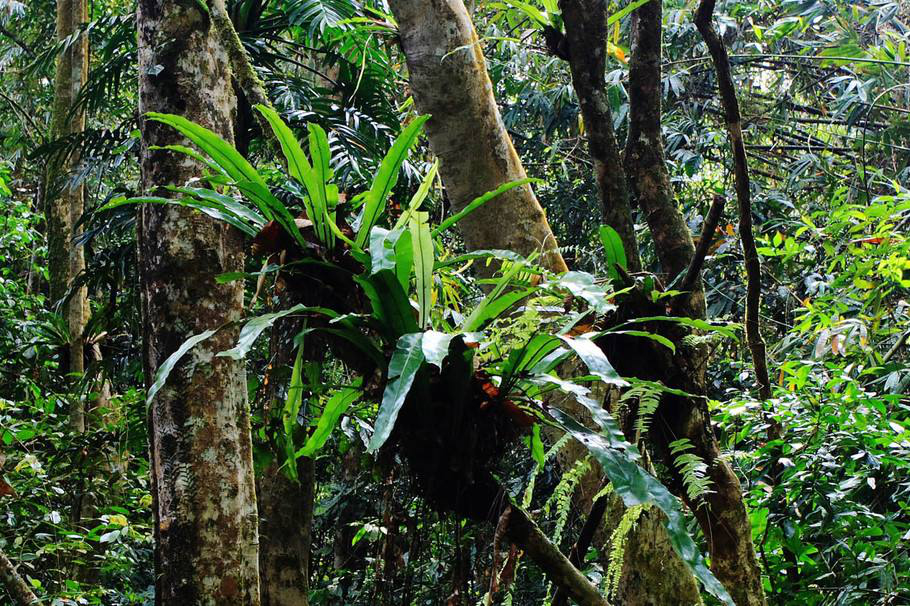
[Old Stem Flowers and Fruits]
Old Stem Flowers and Fruits refers to the phenomenon of blossoming and yielding fruits on tree stems, which is the wisdom of the nature for the plants in rainforest to adapt to insect pollination. In rainforest, the insects have limited range of activities in the crown canopy, and the branches and leaves of adult trees are often very tall. To facilitate the access by insects and other animal pollinators, clever trees will bloom on low stems. As one of the few plants with old stem flowers and yielding fruits in rainforest, the flowers and fruits of Tetrastigma planicaule only on stout stem base of vine, or even affix to the ground. The arrangement of natural laws is not only conducive to its flower pollination through various insects, but also helps them to reproduce more. Of course, it is also beneficial to humans, birds, rodents, etc. for obtaining or eating the fruits and helping them to spread the seeds further. In the meantime, the fruits yielded on old stems are green and sour when they are young, but will become maroon, soft, slightly sweet with more juice and edible when they are mature, and they can also be used for making wine like grapes.
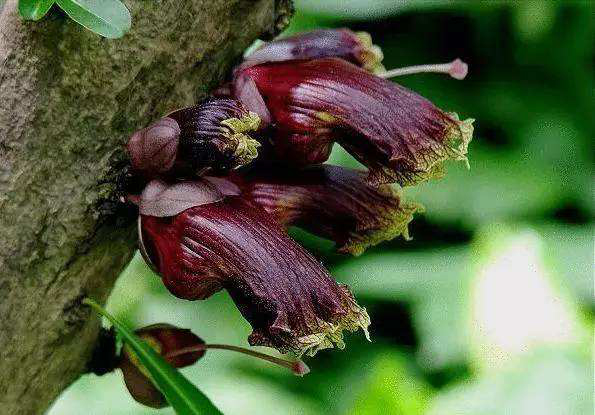
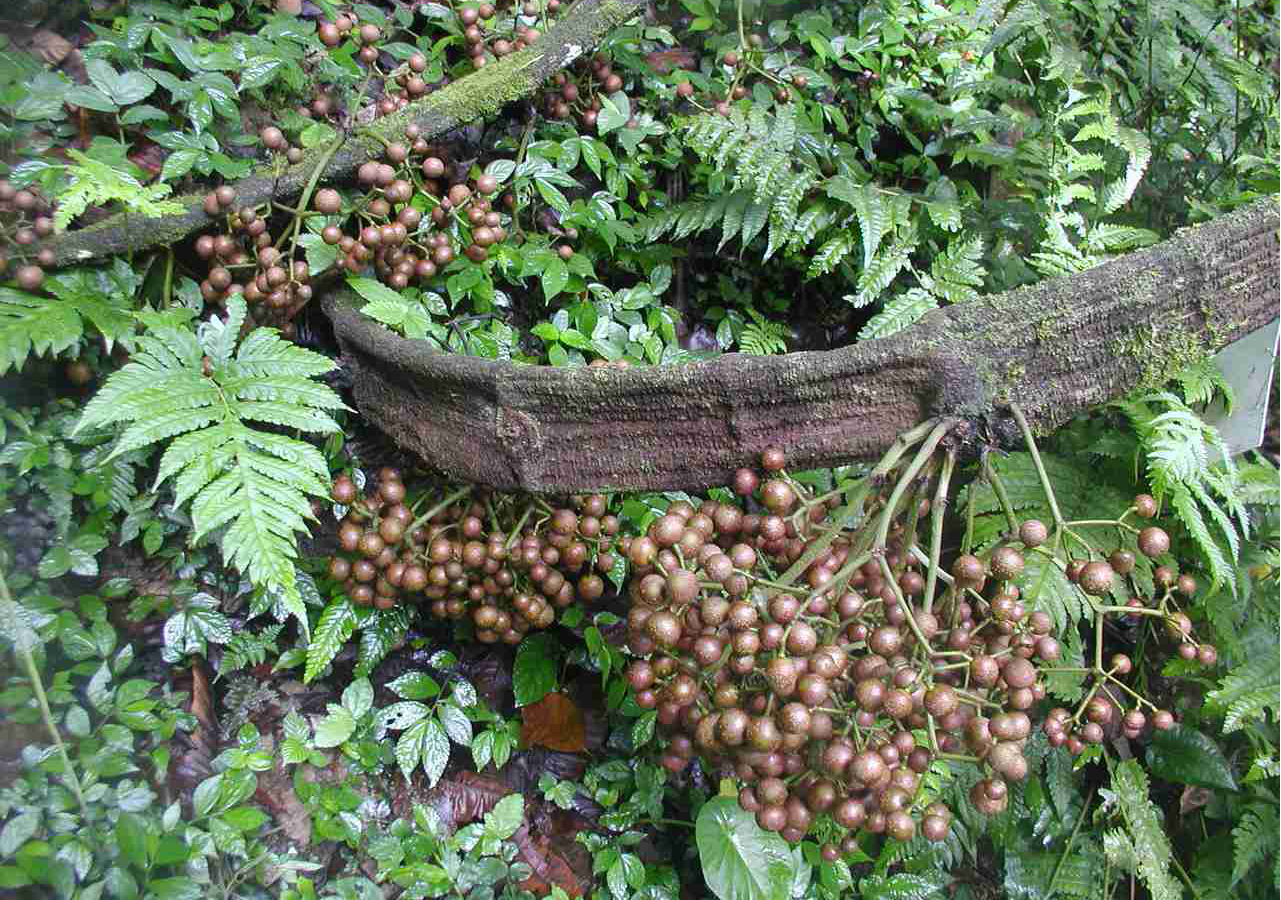
[Thousand-Root Landing]
Thousand-Root Landing refers to the phenomenon in rainforest when lots of roots are grown by trees to absorb nutrients downwards and thousands of roots are in the ground so as to take water downwards while fighting for the sun. In the rainforest, fallen tree roots in a large area look like “strings”, so they are called “forest magic piano” by local people. As time goes by, these roots will grow rapidly and become strong, known as the “pillar roots”, and finally make a forest with one tree.
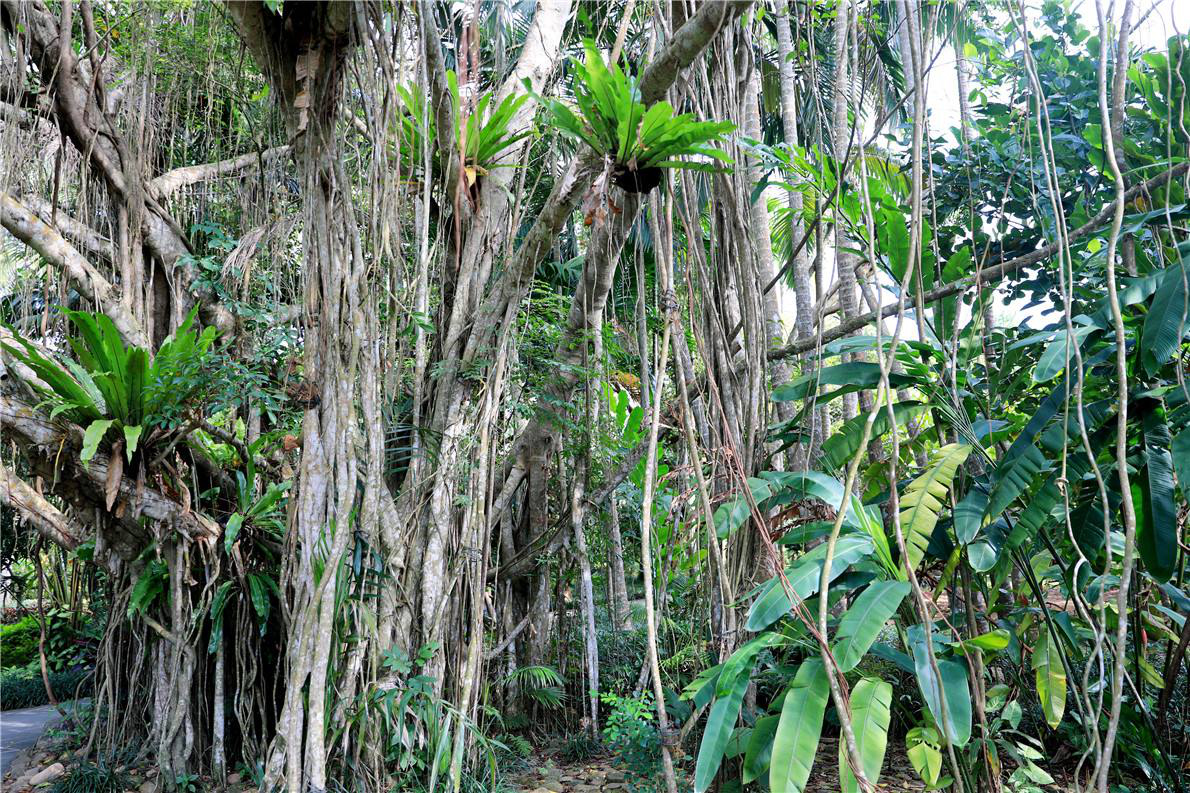
[Plank Buttresses Root]
The phenomenon of plank buttresses root refers to the plank buttress roots developed by tall trees to adapt to the tropical rain forest climate. In tropical rainforest, the abundant rain plays strong leaching role, and takes away many soluble minerals by solution. Therefore, the soil is thin and very poor. The roots of most trees grow on the surface, so that the nutrients on the surface of the soil can be quickly absorbed. To avoid top-heavy problems, the roots are evolved into “plank buttress roots” to resist the impact of heavy storms and maintain moisture. Thus the problem that the tree roots in tropical rainforest are difficult to enter the deep soil while they are required to support the growth of the stems and branches above the ground is solved.
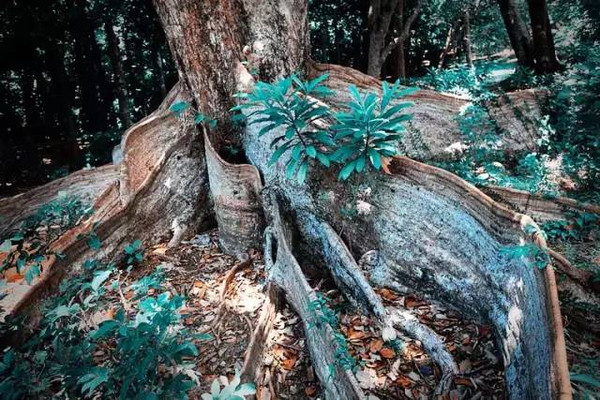
[Strangler Fig]
Strangler fig, also called strangler, refers to the phenomenon when the seeds are excreted onto other trees after the fruit of the strangling plant is eaten by birds. Under suitable conditions, these seeds sprout and produce many aerial roots which climb along the trunk of the tree to the ground soil, robbing the nutrients and water of the host plant, and the host plant is gradually dying due to the oppression of external strangulation and the lack of internal nutrients. In rainforest, there are twenty or thirty kinds of Ficus microcarpa with strangulation function. They often choose some tall and upright hosts as the target of strangulation, which makes it easier to obtain a broader ecological niche. The phenomenon of strangulation is the result of the interaction between plants. This cruel phenomenon is close to the weak meat in the animal kingdom.
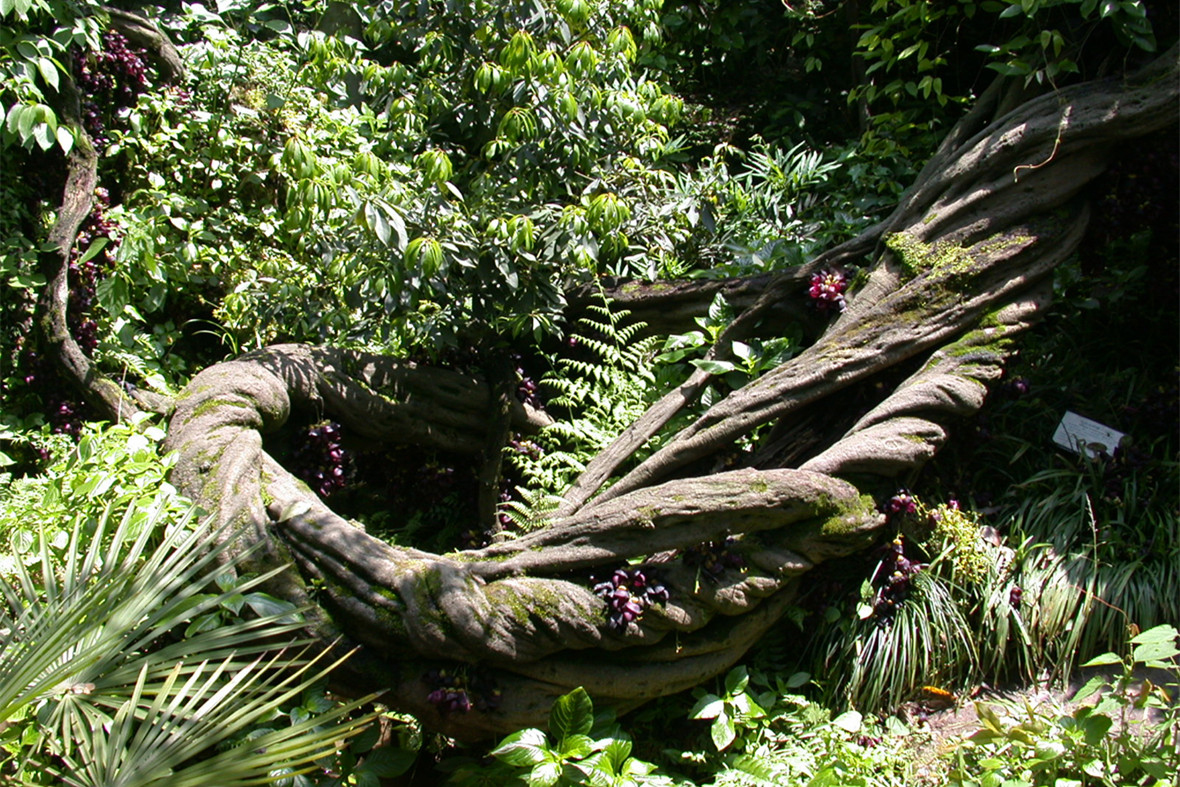
[Tree-enclosed Rock]
The phenomenon of Tree in Stone or Tree-enclosed Rock refers to the condition when the plant seeds fallen onto stone sprout and grow continuously along the stone at suitable temperature and moisture, finally hold the stone firmly and form the phenomenon of tree in stone. In general, Ficus microcarpa is easy to form the phenomenon of tree in stone. To find the soil and more nutrients, the tree attaches multiple roots to the surface of the stone and grows downwards. The whole stone will be contained over time, and the time for the formation of the phenomenon of tree in stone often needs to be a hundred years, so it is very rare.
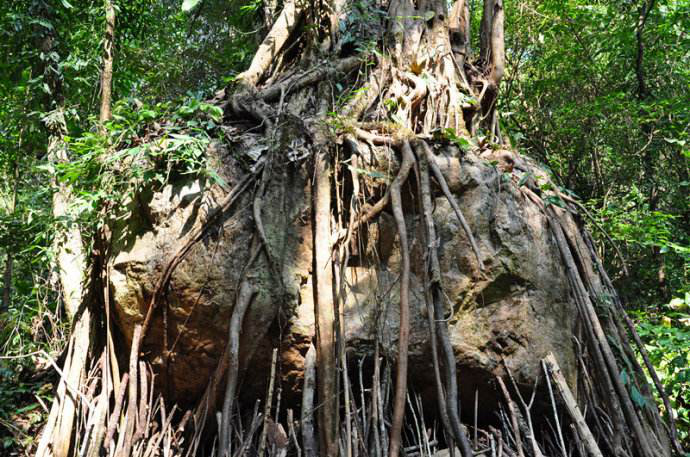
Scan the QR code to read on your phone
